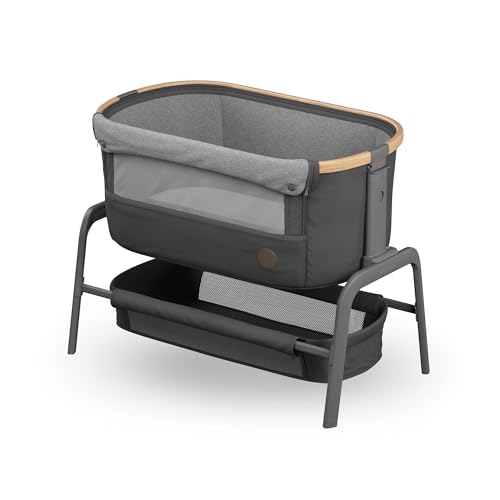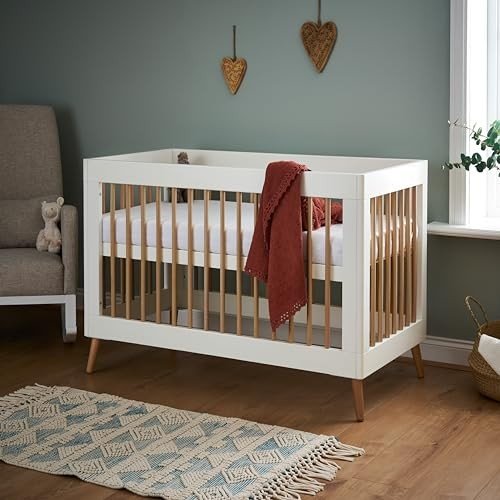The 10 Most Scariest Things About Cot Sales

Rena
6시간 59분전
2
0
본문
 Cot Sales and Ambulance Services
Cot Sales and Ambulance ServicesCot sales are increasing because of higher birth rates and increased awareness about safety for babies. Many companies are also introducing cots that can be converted into day beds.
A consistent and rigorous methodology for assigning cheap cot bed designations is critical to ensure accuracy in government pricing computations. A documented SOP as well as a thorough auditing process are crucial.
Demand for ambulances is increasing
The global ambulance services market is booming due to the rising rate of traumatic accidents as well as chronic health issues. These conditions are often associated with medical emergencies, which need immediate and prompt intervention to save lives. This heightened demand highlights the importance of efficient emergency response systems as well as accessible healthcare facilities to ensure the health of the population.
Ambulances are specially-designed vehicles that transport patients to medical facilities and hospitals and provide vital out-of-hospital medical care in the journey. The demand for these vehicles is driven by factors such as an increase in road accidents as well as an increase in elderly people and favorable reimbursement policies. Air ambulances are also highly sought-after due to the need for reliable and quick medical transportation across long distances.
Based on the service provider market, the global ambulance market is divided into hospital-based independent and government. Hospital-based services are mostly run by healthcare facilities or private companies that operate ambulances on their own. The independent segment, which includes private-owned and operated air ambulances is expected to expand at a rapid pace over the forecast time. The government-operated segment, on other hand, includes ambulances that are operated by state or municipal government agencies or military units.
Based on the type of fuel used, the global ambulance services market is divided into gasoline, diesel, and electric. In the forecast the diesel segment is anticipated to generate the largest revenue share. The superior performance and reliability of diesel-powered ambulances is highly regarded by fleet owners. Moreover, the fuel economy of diesel engines is growing with the advancement of technology. The development of the diesel sector however, is hindered by strict emission regulations.
The demand for ambulances is also caused by the rise of new medical technology. This includes telemedicine capabilities, which allow ambulances to communicate with doctors in real time and receive treatment-related instructions. These technologies help improve patient outcomes and decrease emergency department (ED) admissions and.
The global ambulance services market is heavily dominated by North America, followed by Europe and Asia Pacific. The North American market is fueled by a huge demand for high-quality healthcare and a well-established healthcare system and favorable reimbursement policies. Furthermore, strategic endeavors by market players and the growing the number of geriatrics in the region are also contributing to the potential for growth of the market.
Increasing expenditure in the healthcare sector
The healthcare sector is responsible for a significant portion of the nation's economic activity. It also contributes to the improvement of productivity in the workplace and the development human capital. Increasing expenditure in this sector is therefore important for the performance of the economy. However, it is difficult to know the impact of health care spending on the economy of a country. Numerous factors affect growth and healthcare spending. These variables can differ between industries and regions.
In the US the primary sources of funding for healthcare are private companies, households and the government. Private household and business expenses are funded through premiums for private health insurance and out-of pocket spending. Government program spending is also financed (either through dedicated taxes or general revenues). Program spending by the government is a significant driver of overall health spending trends. During the COVID-19 epidemic, government spending on long-term, non-hospital care services increased significantly. Government programs account for more than a third of health spending in the United States.
Health expenditures are often determined by the Gross Domestic Product (GDP). GDP is a measure of a country's total output. In the case health care, it refers to the production of goods and services. An expanding economy is linked with a better GDP and more jobs. This is why it's crucial to know the impact of healthcare spending on GDP and other indicators of economic growth.
When designing public policies or evaluating new healthcare initiatives, it is important to consider the impact of healthcare spending on economic performance. Numerous studies have demonstrated that spending on healthcare improves the efficiency of human resources as well as boost economic performance (1,2). However, the effects aren't as clear and may differ depending on the sector and population groups affected by the expenditure.
It is important to have a documented cot sale assignment process to ensure that prices paid by the government are consistent and accurate. Inconsistency can result in inaccurate data that can lead to unfavorable Medicaid rebates as well as NFAMP and the 340B/PHS ceiling price. Achieving accurate COT designations can lead to chargebacks, restrictions on contracts and other financial repercussions. To avoid such pitfalls, it is recommended that a COT assigning method be established based on manufacturer's SOPs and COT reference libraries.
The demand for convertible cribs is on the rise
As baby products get more sophisticated, parents are now willing to invest heavily in their children. This has led to an increase in the demand for cribs that can be transformed into daybeds for toddlers or toddlers. These conversion kits can be used to extend the life of a crib while also saving money. In addition, they also help parents avoid a last-minute scramble to find an appropriate bed for their child. Over the forecast period, demand for these cribs will continue to increase.
The market for cribs and cots for infants is growing rapidly, fueled by the rising birth rate and the rising standard of living across the world. The market includes a range of essential baby care products like strollers, monitors, cribs and cots. The demand for multifunctional, high-quality and safe baby furniture is driven by the increasing number of nuclear families and working people. Top brands like DaVinci Baby have multifunctional cribs that can be transformed into toddler beds or a full-sized bed. This lets parents get the most value for their money.
These cribs are usually made of durable wood or metal making them an excellent choice for babies and small children. They are simple to clean, making them an ideal option for families with busy schedules. Many are designed with safety features, such as side guard rails that are built-in and the mattress latch. Some even feature adjustable mattress heights to accommodate different ages.
Specialty stores and distribution channels online sell baby cribs and cots. They are also available in a broad selection of styles, ranging from modern to traditional. Some even incorporate features like sensorsSafe technology and airbags to boost safety and security. The use of environmentally friendly materials in the production process is also increasing.
Considering that babies are able to spend an average of two and one-half years in their cots, they play a crucial part of their early development. This has led manufacturers to create new models that blend style as well as comfort and function. For example, Cradlewise's smart crib uses artificial intelligence to understand the baby's sleeping patterns and adapt to the patterns. It also has the bassinet mode for infants that offers comfort and security.
The demand for multifunctional cots is growing
The market for baby cots worldwide is expected to grow rapidly, driven by changing consumer preferences and technological advances. The market is influenced by regional trends, as well. For instance, Asian countries are a major market contributor to the growth of the market, thanks to rapid urbanization and increasing disposable incomes. These countries' parents are looking for multifunctional products to save space and provide convenience. Companies that adapt their product offerings to these needs are likely to thrive in the market.
Baby cots 4 tots are becoming more sophisticated, with manufacturers incorporating intelligent technology to enhance functionality and ease of use. A new generation of smart cribs, for instance, has IoT capabilities which allow parents to monitor infants through their mobile devices. These advancements make baby cots more versatile and attractive, which boosts their popularity.
The growing trend of urban living has also increased the market for multifunctional cots. Parents in small apartment are looking for furniture that makes the most of space, and affordable cots that can be converted into playpens or even adult beds are appealing to many buyers. Safety is also a primary concern among many families. This has led to an increase in the demand for cots which meet strict regulatory standards.
Consumers are also looking for multi-functional cots with stylish designs. Buyers, and especially parents with a millennial generation, are attracted to brands that emphasize quality and design. This group is more technologically savvy and research-oriented which has led to a surge in demand for furniture for babies that blends function and aesthetics.
Another factor that affects sales of cots is the changing economic environment where families are able to prioritize necessities when budgets are tight. Some manufacturers have responded by introducing low-cost alternatives, allowing them to compete with lower-cost competitors on the market. The rise of online shopping has also changed the buying behavior of consumers, allowing them to access an array of baby products for competitive prices.
 In the long term, the demand for multi-functional cribs for babies will continue to expand. This growth is fueled by new trends and a growing focus on family values. However, obstacles such as fluctuating costs for raw materials and intense competition could impede the growth of the market. For these reasons, it is vital for manufacturers to constantly develop and modify their product offerings.
In the long term, the demand for multi-functional cribs for babies will continue to expand. This growth is fueled by new trends and a growing focus on family values. However, obstacles such as fluctuating costs for raw materials and intense competition could impede the growth of the market. For these reasons, it is vital for manufacturers to constantly develop and modify their product offerings.



댓글목록0
댓글 포인트 안내